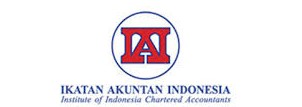The Faktor Determinan Minat UMKM terhadap Penggunaan Aktual Menggunakan Cloud Accounting
Abstract
This study aims to find evidence that the UTAUT (Unified Theory of Acceptance and Use of Technology) model is a conceptual framework for explaining the acceptance and use of cloud accounting as an online accounting service in the city of Padang. The data used in this study are primary data obtained by distributing questionnaires in person and online. This study used purposive sampling with a sample of 340 respondents who had used cloud accounting. The data analysis used in this research is Structural Equation Modeling (SEM). Data analysis techniques using SmartPLS ver.4.0 were processed. This study found evidence that social influences, facilitating conditions and positive influences on behavioral intentions; behavioral intention to actual use has a positive effect, while performance expectations and effort expectations have a negative effect on behavioral intention.
References
Achadiyah, B. N. (2019). Otomatisasi Pencatatan Akuntansi Pada Umkm. Jurnal Akuntansi Multiparadigma, 188-206.
Afifa, M. A., Vo, H., & Le, T. (2022). Blockchain Adoption In Accounting By An Extended Utaut Model: Empirical Evidence From An Emerging Economy. Journal Of Financial Reporting And Accounting, 1-40.
Agustin, H., & Indah, M. (2019). Penerapan Model Utaut (Unified Theory Of Acceptance And Use Of Technology) Untuk Memahami Niat Dan Perilaku Aktual Pengguna Go-Pay Di Kota Padang. Jurnal Eksplorasi Akuntansi, 1949-1967.
Aini, Q., Rahardja, U., Arribathi, A. H., & Santoso, N. P. (2019). Penerapan Cloud Accounting Dalam Menunjang Efektivitas Laporan Neraca Pada Perguruan Tinggi. Cess (Journal Of Computer Engineering Sistem And Science), 60-64.
Ajzen, I. (1991). The Theory Of Planned Behavior. Organizational Behavior And Human Decision Processes, 179-211.
Aksentijevic, N. K., Jezic, Z., & Zaninovic, A. P. (2021). The Effects Of Information And Communication Technology (Ict) Use On Human Development—A Macroeconomic Approach. Economies, 1-12.
Aldholay, A., Isaac, O., & Abdullah, Z. (2018). An Extension Of Delone And Mclean Is Success Model With Self-Efficacy Online Learning Usage In Yemen. The International Journal Of.
Alkhawaldi, A. F., & Al Eshoush, A. S. (2022). Towards A Model For Citizens’ Acceptance Of E-Payment Sistems For Public Sector Services In Jordan: Evidence From Crisis Era. Information Sciences Letters, Vol.11.
Alkhawaldi, A. F., & Al-Ajaleen, R. T. (2022). Toward A Conceptual Model For Citizens’ Adoption Of Smart Mobile Government Services During The Covid-19 Pandemic In Jordan. Information Sciences Letters An International Journal, 573-579.
Alleyne, P., & Lavine, M. (2013). Factors Influencing Accountants’ Behavioural Intentions To Use And Actual Usage Of Enterprise Resource Planning Sistems In A Global Development Agency. Journal Of Financial Reporting And Accounting, 179-200.
Al-Okaily, M., Alkhwaldi, A. F., Abdulmuhsin, A. A., Alqudah, H., & Al-Okaily, A. (2022). Cloud-Based Accounting Information Sistems Usage And Its Impact On Jordanian Smes’ Performance: The Post-Covid-19 Perspective. Journal Of Financial Reporting And Accounting, 1985-2517.
Alsyouf, A., & Ishak, A. K. (2018). Understanding Ehrs Continuance Intention To Use From The Perspectives Of Utaut: Practice Environment Moderating Effect And Top Management Support As Predictor Variables. International Journal Of Electronic Healthcare, 24-59.
Amalia, S., Kusyanti, A., & Herlambang, A. D. (2018). Faktor-Faktor Yang Memengaruhi Minat Nasabah Dalam Menggunakan Layanan Internet Banking Dengan Menggunakan Utaut (Unified Theory Of Acceptance And Use Of Technology) (Studi Pada Pengguna Internet Banking Bri). Jurnal Pengembangan Teknologi Informasi Dan Ilmu Komputer, 2(10) : 3315-3322.
Amrullah, A., & Priyono, A. (2018). Integrasi Aspek Risiko Dalam Model Unified Theory Of . Jurnal Ilmiah Manajemen, 3 (1): 33-49.
Anjani, W., & Mukhlis, I. (2022). Penerapan Model Utaut (The Unified Theory Of Acceptance. Jurnal Ekonomi Akuntansi Dan Manajemen, 1-22.
Cao, Q., & Niu, X. (2019). Integrating Context-Awareness And Utaut To Explain Alipay User. International Journal Of Industrial Ergonomics, 69 : 9-13.
Christauskas, C., & Miseviciene, R. (2012). Cloud -Computing Based Accounting For Small To Medium Sized Business. Engineering Economics, 23(1).
Davis, F. D. (1989). Perceived Usefulness, Perceived Ease Of Use, And User Acceptance Of Information Technology. Mis Quarterly, 13(5) : 319-339.
Delone, W. H., & Mclean, E. R. (2016). Information Sistems Success Measurement. United States: Now Publishers Inc.
Dimitriu, O., & Matei, M. (2015). Cloud Accounting: A New Business Model In A Challenging Context. Procedia Economics And Finance, 665-671.
Dwivedi, Y. K., Rana, N., & Williams, M. D. (2011). A Meta-Analysis Of The Unified Theory Of Acceptance And Use Of Technology (Utaut). International Federation For Information Processing, 155-170.
Eldalabeeh, A. R., Al-Shbail, M. O., Almuiet, M. Z., Baker, M. B., & E’leimat, D. (2021). Cloud-Based Accounting Adoption In Jordanian Financial Sector. Journal Of Asian Finance, Economics And Business, 833-849.
Fishbein, M. &. (1975). Belief, Attitude, Intention, And Behavior: An Introduction To Theory And Research, Reading. Ma : Addison-Wesley.
Ghozali, I. (2016). Aplikasi Analisis Multivariete Dengan Program Ibm Spss 23 (Edisi 8) Cetakan Ke Viii. Semarang: Badan Penerbit Universitas Diponegoro.
Gullkvist, B. (2011). Drivers Of Diffusion Of Digital Accounting Practice. Actawasaensia, 25-43.
Gunawan, H., Sinaga, B. L., & Purnomo, S. (2019). Assessment Of The Readiness Of Micro, Small And Medium Enterprises In Using E-Money Using The Unified Theory Of Acceptance And Use Of Technology (Utaut) Method. Procedia Computer Science, 316-323.
Hadi, M. S., Suryanto, T. L., & Faroqi, A. (2019). Analisis Faktor. Jurnal Sistem Informasi Dan Bisnis Cerdas, Vol 12 (1).
Handayani, E., Adrianto, Z., & Ritchi, H. (2021). Examining User Intention Toward Cloud-Based Accounting Information Sistem Adoption. Journal Of Accounting Auditing And Business, 80-90.
Handayani, T., & Sudiana, S. (2015). Analisis Penerapan Model Utaut (Unified Theory Of Acceptance And Use Of Technology) Terhadap Perilaku Pengguna Sistem Informasi (Studi Kasus: Sistem Informasi Akademik Pada Sttnas Yogyakarta). Jurnal Angkasa, 165-180.
Hartono. (2011). Analisis Data Statistika Dan Penelitian. Yogyakarta: Pustaka Pelajar.
Hermanto, S. B., & Patmawati. (2017). Determinan Penggunaan Aktual Perangkat Lunak Akuntansi Pendekatan Technology Acceptance Model. Jurnal Akuntansi Dan Keuangan, 67-81.
Hidayat, A. T. (2019). The Influence Of Product Quality, Price Perception, And Brand Image On Furniture Purchase At Pt. Jati City Furindo Jepara. Economics And Business Solutions Journal, 3(2) 67.
Im, I. H. (2011). An International Comparison Of Technology Adoption:Testing The Utaut Model. Information & Management, 48 (1) : 1-8.
Jayanti, P. E., & Ariyanto, D. (2019). Pengaruh Ekspektansi Kinerja, Ekspektansi Usaha, Faktor Sosial Budaya, Dan Kondisi Yang Memfasilitasi Pada Penerapan Sia Di Lpd Kota Denpasar. E-Jurnal Akuntansi Universitas Udayana, 534-567.
Khanom, T. (2017). Cloud Accounting: A Theoretical Overview. Iosr Journal Of Business And Management, 19(06), 31–38.
Khoirunnisak, W. (2016). “Implementasi. Doctoral Dissertation, Institut.
Kim , H. W., & Khawk, K. Y. (2007). Comparing The Usage Behavior And The Continuance Intention Of Mobile Internet Services. Conference: Management Of Ebusiness.
Kim, H. W., Chan, H. C., & Gupta, S. (2007). Value-Based Adoption Of Mobile Internet: An Empirical Investigation. Decision Support Sistems, 43(1), 111–126.
Kuo, Y. F., Wu, C. M., & Deng, W. J. (2009). The Relationships Among Service Quality, Perceived Value, Customer Satisfaction, And Post-Purchase Intention In Mobile Value-Added Services. Computers In Human Behavior, 25(4) : 887-896.
Kusumo, Y. E. (2017). Analisis Pemilihan Program Aplikasi Cloud Accounting Untuk Usaha Kecil Dan Menengah. Universitas Sanata Dharma Yogyakarta.
Lallmahomed, M., Lallmahomed, N., & Chowdhury, M. G. (2017). Factors Influencing The Adoption Of E-Government Services In Mauritius. Telematics And Informatics, 34 (4).
Ma, D., Fisher, R., & Nesbit, T. (2021). Cloud-Based Client Accounting And Small And Medium Accounting Practices: Adoption And Impact. International Journal Of Accounting Information Sistems, 1-19.
Mahendra, A. R., & Affandy, D. P. (2013). Faktor-Faktor Yang Mempengaruhi Minat Pemanfaatan Sistem Informasi Pengelola Keuangan Daerah (Sipkd) (Studi Kasus Pada Pemerintah Kota Blitar). Jurnal Ilmiah Mahasiswa Feb Universitas Brawijaya, 1(2), 1–23.
Mediyanto, B., & Mahendra, I. (2017). Penerapan Metode Utaut Untuk Memprediksi Behavioral Intentions User Dalam Menggunakan Aplikasi Zabbix. E-Journal Jitk, 9-16.
Meiranto, W. (2012). Analisis Faktor Faktor Yang Mempengaruhi Minat Pemanfaatan Dan Penggunaan Teknologi Pembayaran Elektronik Bergerak Dengan Menggunakan Model Utaut. (Studi Kasus Pada Teknologi M-Dinar Payment Sistem). Jurnal Akuntansi Indonesia, 50-60.
Moon, J. W., & Kim, Y. G. (2001). Extending The Tam For A World-Wide-Web Context. Information And Management, 38 : 217-230.
Musyaffi, A. M. (2020). Perspektif Kritis Kesuksesan Implementasi Cloud Accounting Bagi Calon Akuntan: Kajian Model Utaut & Is Succes Model. Substansi: Sumber Artikel Akuntansi, Auditing, Dan Keuangan Vokasi, 4(1).
Popivniak, Y. (2019). Cloud-Based Accounting Software: Choice Options In The Light Of Modern International Tendencies. Baltic Journal Of Economic Studies, 5(3) : 170.
Pratiwi, N. P., Ariyanto, D., Putra, I. N., & Mimba, N. P. (2022). Penilaian Kesuksesan Penerapan Xero Accounting Software Dengan Model Utaut Dan Delone & Mclean. E-Jurnal Akuntansi, 451-468.
Rahi, S., Ghani, M. A., & Ngah, A. H. (2018). A Structural Equation Model For Evaluating User’s Intention To Adopt Internet Banking And Intention To Recommend Technology. Accounting, 139-152.
Rahmania, D. &. (2019). Keefektifan Penyusunan Laporan Keuangan Menggunakan Sleekr Accounting. Progress Conference, 2(1) : 232-7.
Ronaghi, M. &. (2020). A Contextualized Study Of The Usage Of The Internet Of Things (Iots) In Smart Farming In A Typical Middle Eastern Country Within The Context Of Unified Theory Of Acceptance And Use Of Technology Model (Utaut). Technology In Society, Vol. 63.
Sadighi, M. (2014). Accounting Sistem On Cloud: A Case Study. Eleventh International Conference On Information Technology: New Generations (Itng).
Saisaba, S., & Murthy, T. N. (2013). Actors Influencing The Behavioral Intention To Adopt Internet Banking: An Empirical Study In India. Researchers World, 4(1) : 77-91.
Sedana, I., & Wijaya, S. (2009). Penerapan Model Utaut Untuk Memahami Penerimaan Dan Penggunaan Learning Management Sistem Studi Kasus: Experential E-Learning Of Sanata Dharma University. Jurnal Sistem Informasi, 5 (2): 114-120.
Sekaran, U. (2006). Research Methods For Business. Jakarta: Salemba Empat.
Siregar, A. R. (2008). Penggunaan Sistem Dan Teknologi Informasi Untuk Usaha. Usu E-Repository.
Song, C. H., & Lee, J. H. (2013). Effects Of Trust And Perceived Risk On User Acceptance Of A New Technology Service. Social Behavior And Personality An International Journal, 41 (4).
Straub, E. (2009). Understanding Technology Adoption: Theory And Future Directions For Informal Learning. Review Of Educational Research, 79 : 625-649.
Sugiharto, B., Umiyati, I., & Sholihah, N. N. (2021). Application Of Unified Theory Of Acceptance And Use Of Technology (Utaut) Model To The Intention To Using Mobile Banking Service. Accounting Research Journal Of Sutaatmadja (Accruals), 137-159.
Sugiyono. (2009). Metode Penelitian Pendidikan Pendekatan Kuantitatif, Kualitatif, Dan R&D. Bandung: Alfabeta.
Tam, C., & Oliveira, T. (2016). Understanding The Impact Of M-Banking On Individual Performance: Delone & Mclean And Ttf Perspective. Computers In Human Behavior, 61 : 233-244.
Tangke, N. (2005). Analisa Penerimaan Penerapan Teknik Audit Berbantuan Komputer (Tabk) Dengan Menggunakan Technology Acceptance Model (Tam) Pada Badan Pemeriksa Keuangan (Bpk) Ri. Jurnal Akuntansi Dan Keuangan, 6(1) : 1-10.
Taufiq, M. (2017). Pengaruh Teknologi Informasi Dalamkeprofesian Dan Implikasinya Dalam Dunia. Naturalistic: Jurnal Kajian Penelitian Pendidikan Dan Pembelajaran, 176-185.
Thompson, R. L., Higgins, C. A., & Howell, J. M. (1991). Personal Computing: Toward A Conceptual Model Of Utilization. Mis Quarterly, 125-143.
Turner, L., Weickgenannt, A. B., & Copeland, M. K. (2019). Accounting Information Sistems: Controls And Processes. Wiley, 2019.
Venkatesh, V., Morris, M. G., Davis, G. B., & Davis, F. D. (2003). User Acceptance Of Information. Mis Quarterly, 425-478.
Wahyuningsih, A. (2019). Tingkat Penggunakan Layanan Elektronik Banking Pada Bank Swasta Yang Dimediasi Oleh Minat Menggunakan. Proceedings 6thncab (National Conference On Applied Business), 257-263.
Wetzels, M., Ruyter, K. D., & Bloemer, J. (2000). Antecedents And Consequences Of Role Stress Of Retail Sales Persons. Journal Of Retailing And Consumer Services, 7(2).
Wu, J. &. (2005). What Drives Mobile Commerce? An Empirical Evaluation Of The Revised Technology Acceptance Model. Information Management, 42 : 719-729.
Zamzami Fai, N. D. (2017). Sistem Informasi Akuntansi. Gadjah Mada Unisversity Press.







.png)
.png)
